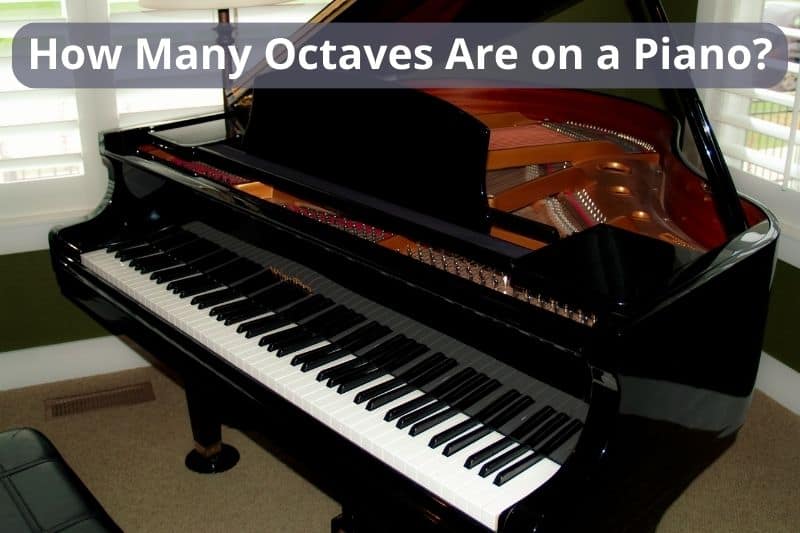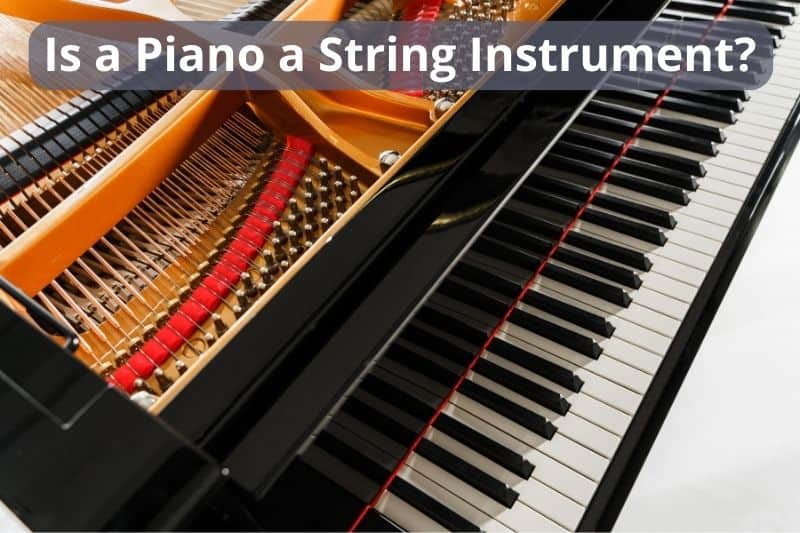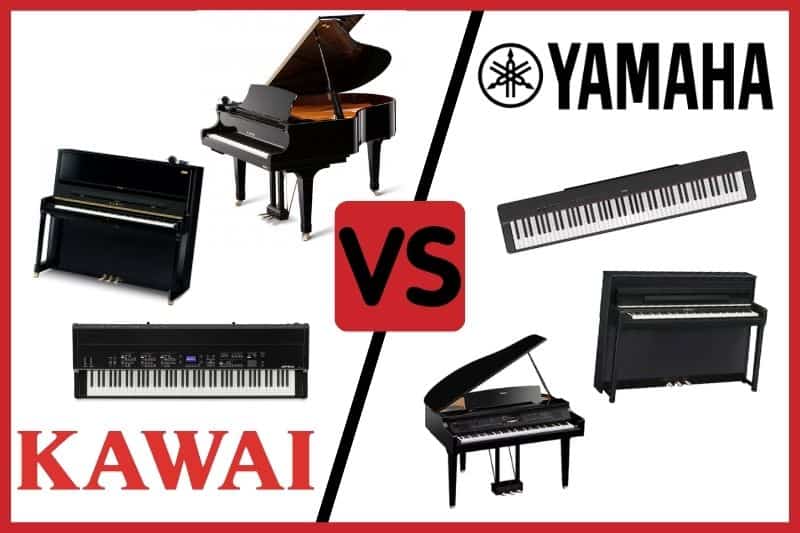Understanding the number of octaves on a piano is essential if you’re dipping your toes into the world of music theory or just curious about the instrument. An octave on a piano spans eight notes in a scale, where the first and last notes are the same letter but have pitches that are double or half of each other.
This pattern of pitch doubling or halving creates what musicians recognize as the same note at different octaves, which is a fundamental aspect of music’s melodic and harmonic structure.

A standard acoustic and many digital pianos have 88 keys, making 7 octaves plus a minor 3rd. You can also find digital pianos with 76 keys, equal to 6 octaves and a minor 3rd. Another popular keyboard size is 61 keys, which is 5 octaves plus an extra key.
Piano Keyboard Layout
When you look at a piano keyboard, you’re looking at a complex arrangement of 88 keys, made up of 52 white keys and 36 black. These form the building blocks for all acoustic piano music.
Number of Keys
Your piano keyboard has 88 keys in total. This is the standard for a full-sized piano, and it’s what you’ll find on most grand and upright pianos used today.
Octaves on a Piano
One octave on a piano spans from one note to the next with the same name, which includes a set of 12 notes in a specific sequence. With your 88-key piano, you have access to seven full octaves plus a minor third, ranging from the lowest note, A0, to the highest note, C8.
White and Black Key Structure
A closer look at your piano keyboard reveals a recurrent pattern:
- White keys: Represent the notes of the C major scale (C, D, E, F, G, A, B)
- Black keys: Grouped in twos and threes; these are the sharps and flats
Every octave comprises 7 white keys and 5 black keys, which combine to form those 12 semitones you’ve learned about.
The Evolution of Piano Octaves
The number of octaves on a piano has grown significantly since the earliest keyboard instruments.
Early Keyboard Instruments
Before the piano, you had musical instruments like the harpsichord and clavichord, defining the keyboard family. They usually had a range of about four to five octaves. The harpsichord, made famous during the Baroque period, produced sound by plucking strings when keys were pressed, while the clavichord would strike strings with small metal blades called tangents.
Bartolomeo Cristofori and the First Pianos
It was Bartolomeo Cristofori, an Italian piano maker, who crafted the first pianos at the beginning of the 18th century. These instruments had ranges similar to their predecessors but introduced a hammer action that allowed for a dynamic expression in sound. Cristofori’s pianos laid down the foundational design for all subsequent pianos.
Expansion to the Modern 88-Key Piano
As music evolved, so too did the piano. By the late 19th century, the 88-key piano became standard, giving players an expansive range of seven full octaves plus a minor third. This setup is what you’d find in most of today’s grand and upright pianos, forming the basis of modern piano music’s extensive repertoire.
Octave Significance in Composition
An octave is an interval that spans eight notes in a scale, where the first and eighth note have the same name and a pitch frequency ratio of 2:1. This means the eighth note (an octave higher) vibrates at exactly twice the frequency of the first note. In composition, octaves are essential as they provide a way to repeat notes at different pitches, enriching the music’s texture and offering composers a broad canvas to express musical ideas. The contemporaneous use of diverse octaves can create harmony or emphasize melodic lines within a piece.
The Role of Octaves in Piano Playing
Mastering a piano’s full range of octaves is crucial to your development as a pianist. It influences everything from the basics of finger positioning to the complexity of your musical expression.
Technique and Finger Positioning
Your fingers must adapt to different spacing across the octaves, which means mastering distinct hand postures and movements. Each hand typically covers a span of an octave when playing chords or scales. As a beginner, you’ll learn exercises that make transitioning between octaves smoother and more secure, leading to more fluid performances.
Learning and Memorization
When you’re familiar with the pattern of octaves on the piano, it becomes easier to memorize pieces. This understanding helps to chunk information, which simplifies learning new compositions. Recognizing octaves aids in sight-reading as well, allowing you to anticipate the distance your hands must move across the keyboard.
Expressive Potential and Dynamics
The octaves on a piano allow you to play with a range of volumes and textures, adding depth to your performances. From the thunderous low octaves that add gravity to the bright, piercing high octaves that convey excitement, mastering octaves enables you to vary your dynamics. This not only impacts the loudness but also the emotional tone of the music you’re playing.
Piano Varieties and Their Ranges
When you’re exploring pianos, you’ll find a range of sizes, each with its unique range of octaves. From portable keyboards to grand pianos, the number of octaves varies to suit different needs and spaces.
Small Pianos and Portable Keyboards
Small pianos, such as those with 49 keys, typically provide you with four octaves, offering enough range for beginners or for those with limited space. Portable keyboards, often used by beginners or as a convenient option for musicians on the go, can range anywhere from 61 keys (five octaves) to 76 keys (six and a half octaves). While these instruments are more compact, they still offer a diverse octave range that can accommodate most playing styles.
Grand Pianos and Concert Instruments
Grand pianos and concert instruments are the larger counterparts designed for professional use and performances. A modern grand piano has 88 keys, which give you a full seven octaves plus a minor third. This breadth of range allows for the expression of a vast repertoire of music across genres, from classical compositions to modern pieces.
Digital Pianos and Electronic Keyboards
Digital pianos and electronic keyboards offer a versatile option, with most providing the same 88-key, seven-plus octave range as grand pianos. However, synthesizers and other electronic keyboards can vary greatly in their range, often designed with specific functionalities or sound ranges in mind. They can have fewer octaves but compensate with the ability to produce a wide array of sounds and effects.
Influence of Piano Octaves in Music Genres
The range of octaves on a piano plays a crucial role in defining the characteristics and possibilities within different music genres.
Classical Compositions
The extensive span of 7 1/3 octaves found on a standard piano has allowed classical composers like Ludwig van Beethoven and Joseph Haydn to push musical boundaries. Beethoven’s repertoire, including iconic pieces such as his Piano Sonata No. 29 ‘Hammerklavier’, utilizes the full spectrum of the piano, demanding technical mastery for both low and high notes. His contemporary, Haydn, also made significant use of the piano’s range in his compositions, which often feature intricate melodies that travel across the keyboard.
Jazz and Improvisation
In jazz, the piano’s octave range allows for a layered and complex sound. Improvisation and the spontaneity of jazz performances are heavily reliant on the pianist’s ability to move across octaves. Debussy, often regarded as an impressionist, influenced jazz musicians with his Preludes, which frequently employed the piano’s full octave range to create rich harmonies and textural depth. The ability to play chords and melodic lines over several octaves offers a vast canvas for jazz pianists to express their individual musical ideas.
Pop and Contemporary Music
In pop and contemporary music, the piano’s octaves serve as the foundation for songwriting and production. Composers often use the mid-range octaves to craft catchy melodies, while the lower and higher octaves are used for adding depth with bass lines and sparkling high notes. This versatility ensures that the piano remains a favorite for pop music songwriters. The range of octaves facilitates a full-sounding performance even with a solo instrument, accentuating the singer’s voice or standing alone as an instrumental piece.



